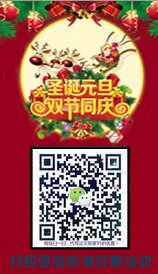On Translation of Tourist Material [7]
论文作者:马锦英论文属性:短文 essay登出时间:2009-04-02编辑:黄丽樱点击率:35817
论文字数:7325论文编号:org200904022048411653语种:英语 English地区:中国价格:免费论文
关键词:tourist materialslanguageculturetranslationDifferent
e 2:
路左有一巨石,石上有苏东坡手书“云外流春”四个大字。
“To the left is another rock formerly engraved with four big Chinese characters Yun Wai Liu Chun (Beyond clouds flows spring) written by Su Dongpo (1037-1101), the most versatile poet of the Northern Song Dynasty (960-1127).”
Su Dongpo, a household name in China, yet few foreigners know him. In this sentence Su’s date of birth and his position in the Northern Song Dynasty are added, thus the original meaning is well represented. Also an English explanation is given to “云外流春”, so the cultural relics’ value is preserved.
(方梦之2004:141)
Example 3:
(介绍杭州)五代时的吴越国和南宋均在此建都,历时237年
“Hangzhou served as the capital of empires for 237 years, first as the capital of the kingdom of Wuyue(907-978) during the Five Dynasties Period, and again as the capital of the Southern Song Dynasty (1127-1279).”
In the Chinese original, the existing years of the kingdoms are referred to, but with no mention of its respective years of them. In translation, the years are added, so the foreign readers can have a general idea of the history.
5.2 Explanation
Explanations are made to some words, phrases, and sentences so as to help foreign readers understand the introduction easily and at the same time make it more delightful and readable.
Example1:
湖州含山蚕花节
“Huzhou Hanshan Silkflower Festival, an occasion for worshipping the God of silkworm”
It seems that the latter part can be omitted, is it really redundant? Huzhou Hanshan Silkflower Festival has become the state important tourist festive activity in China. Actually the festival has a religious touch. Because the locals believe that, during the days of the Qingming Festival, the God of Silk would come to Hanshan to bring them “luck”, which would guarantee a good silkworm harvest. Therefore, this explanation reveals the essence of the activity. Surely it is not an unnecessary addition.
Example 2:
端午节那天,人们都要吃粽子。
“During the Dragon Boat Festival (which falls on the fifth day of the fifth lunar month), it is a common practice to eat Zongzi, which is a rice pudding wrapped up with reed leaves.”
Here, not only explanation is made to “Dragon Boat Festival”, but also paraphrases are given to “粽子”. Cultural message is well transmitted.
(国家旅游局人事劳动教育司编,2001:26)
Example 3:
湖南省位于长江中游南部,东经108度至114度,北纬24度至30度。因地处洞庭湖之南,所以叫湖南。
“Hunan Province lies just south of the middle reaches of the Changjiang River between 108’ and 114’E longitude and 24’ and 30’N latitude. As it is also situated south of Lake Dongting, the Province has the name Hunan, which means ‘south of the lake’.”
The translator uses a qualifying clause to explain the geographic name of “湖南”, making foreign readers know the origin of “湖南”, so they may have a deep impression on it..
From readers’ physiological point of view, the effect is quite different between versions with explanations and without explanations. With explanations, foreigners will know more about China and then show more interest.
5.3 Analogy
The long and splendid Chinese history has made the majority of the scenery labeled with traces of different periods of time. In translating, using analogy can shorten the distance between foreign readers and the Chinese culture. That is to say, using their familiar things to compare and to interpret the different objects, making them feel close to the objects, so as to stimulate their interest in touring. Normally, “Liang Shanbo” and “Zhu Yingtai” are compared to “Romeo and Juliet”; Suzhou is compared to Venice of
本论文由英语论文网提供整理,提供论文代写,英语论文代写,代写论文,代写英语论文,代写留学生论文,代写英文论文,留学生论文代写相关核心关键词搜索。

 英国
英国 澳大利亚
澳大利亚 美国
美国 加拿大
加拿大 新西兰
新西兰 新加坡
新加坡 香港
香港 日本
日本 韩国
韩国 法国
法国 德国
德国 爱尔兰
爱尔兰 瑞士
瑞士 荷兰
荷兰 俄罗斯
俄罗斯 西班牙
西班牙 马来西亚
马来西亚 南非
南非






